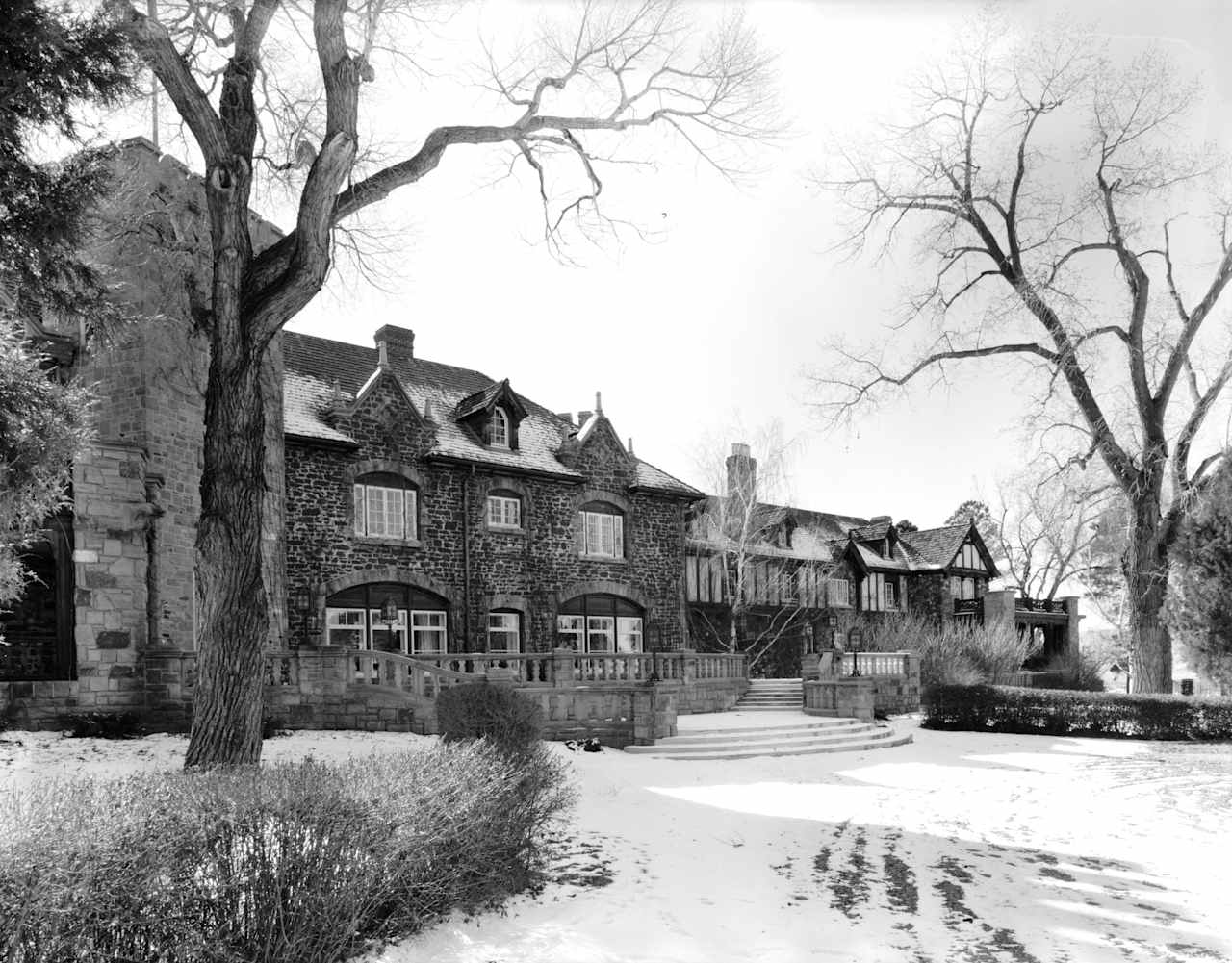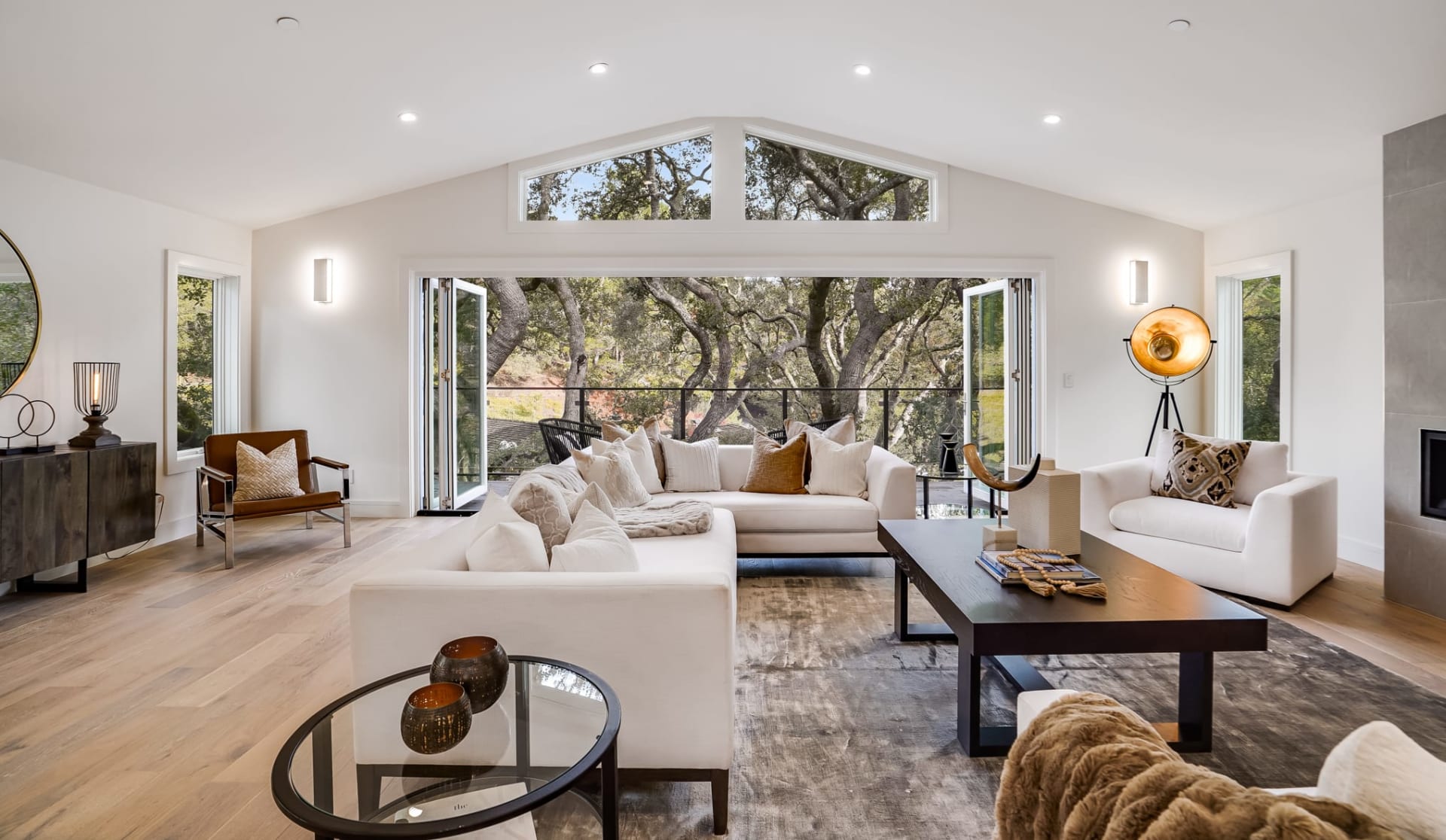The Mansion’s next owner was John Springer, whose wife Eliza’s ill health forced a move to Denver in 1897. In 1891, Springer began construction of the Mansion. The original building reflected a Russian castle style. He completed almost 60 percent of the present structure. Springer quickly rose to local prominence and was active in politics, running for mayor of Denver. In 1904, Springer’s wife died. He re-married Isabelle, and renamed the mansion Castle Isabelle.
Springer sold the ranch to Colonel Hughes, his first father-in-law, in 1913. Hughes later stabled horses in the ranch house and renamed the property Sunland Ranch. When Colonel Hughes died in 1918, the land passed to his granddaughter, Annie Clifton Springer Hughes. Anne and her husband Lafayette sold the mansion in 1920 to Waite Phillips, one of the brothers who founded Phillips Petroleum. Phillips owned the property for about six years and first introduced the name Highlands Ranch. In 1926, Phillips sold the mansion to Frank E. Kistler for $425,000.
Kistler converted the ranch into a breeding ranch specializing in dairy and Angus cattle, purebred sheep, hogs and chickens. The ranch was then known as the Diamond K Ranch. Local parks are named after Kistler and the Diamond K Ranch. At the same time, Kistler added the final 40 percent of the mansion and altered the style to a classic Tudor. The six fireplaces, nine bedrooms, hardwood floors and a secret passageway were reminiscent of the European homes and allowed for entertaining in grand style.
The photo above was taken from the Mansion’s main entrance looking out at the foothills to the west.
Kistler invited Lawrence C. Phipps, Jr., to relocate the Arapahoe Hunt Club to the southern part of the ranch in 1929. This foxhunt club is still active today, although at a different location. Kistler’s subsequent financial troubles caused him to sell the entire property to Phipps in 1937, for $250. Phipps’ father, Lawrence C. Phipps, Sr., made his fortune with Carnegie Steel. The Phipps family members have been prominent leaders of industry in Colorado with involvement in construction, trucking, professional sports, including the Denver Broncos, ranching and real estate, among others. The Phipps family acquired the property as a residence and a working ranch and renamed it Highlands Ranch. Under their skillful management, the property again prospered.
Lawrence Phipps, Jr. died in 1976 and the ranch was sold to Marvin Davis, of Davis Oil Corporation, for more than $13 million. He re-sold the property in 1978 to Mission Viejo Company, which had a vision of a master planned community. In 1997, Mission Viejo Company was purchased by Shea Homes.
The ranch encompasses 250 acres. While the main purpose of the ranching operation has been beef production, the ranch also included a dairy operation, which was located in the northern barn. The brick silos connected to the barn provided storage for cattle feed during the winter. The bunkhouse west of the dairy barn provided lodging for many of the ranch hands who worked on the property. The next barn was used for general maintenance activities within the ranch. The corrals to the south and east of the barns were typically used during the calving and branding operations.
The windmill south of the mansion is the site of the primary well used for the ranching headquarters and mansion. The well is still in operation; however, the pump is now powered by electricity. There were quite a number of wells drilled throughout Highlands Ranch so that water would be available for cattle in each pasture.
In 2010, Shea Homes gave the Mansion and funds for its renovation, to the Highlands Ranch Metro District. After conducting a comprehensive renovation of this beautiful building, the Metro District opened the Mansion to the public and for private event rentals, in June 2012.
Learn more about the historic Highlands Ranch Mansion and the days and times you can visit during open hours, by visiting HighlandsRanchMansion.com.


